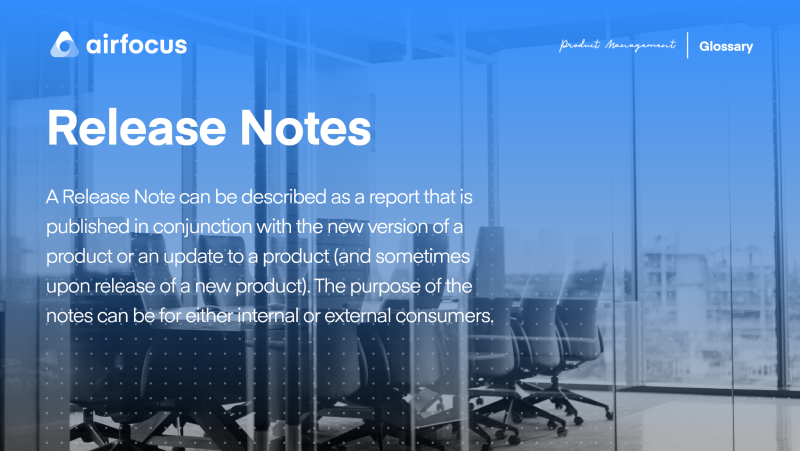Release Notes
What are Release Notes?
Definition of a Release Note
Release notes refer to the technical written documentation distributed and produced alongside the launch of a product update or a new software product. all experience. Release notes are an opportunity to send a message and communicate with your customers and with your broader market. If they are written well, release notes can increase customer loyalty and nurture engagement.
Release notes generally contain a header, overview, purpose, issue summary, steps to reproduce, resolution, end-user impact, support impacts, notes, disclaimers, and contact information.
While release notes do not have a standard format, they should still adhere to your own company's standards. Release notes for feature enhancements and bug fixes might be somewhat less descriptive than those for a new product.
What should release notes cover?
Typically, these notes should include material such as changes appearing in the latest version of the product, why the changes have been made, how this is going to affect the consumer, and what the consumer might need to do differently.
It is integral that the notes communicate the change, even if there is a reduction of some sort to the product as opposed to any additions.
Release notes template (plus great release notes examples)
Writing great release notes starts with the right structure. Even though there’s not set in stone way to format your release notes, here’s a template for release plan to help you include all the necessary info.
Introduction — The introduction should briefly describe the changes and the product.
Overview —The overview should discuss the product’s history and why changes are needed. Are you making changes because of product bugs or flaws or based on customer feedback? If your changes are based on customer feedback, make sure you mention the feedback or customer request. This helps send the message that you’re keeping customer suggestions in mind during your updates.
Impacted users/products/software — This section should include what services or products are being changed and which users will be affected.
Changes to previous release notes — This section lays out a history of previous changes from past release notes.
Fixed issues — Here, describe all the issues that your new release fixes.
Issues/limitations/challenges — In this section, you should talk about all the limitations and obstacles you experienced while completing these changes.
Implementation — This section will detail how you’re implementing these new changes. Mention things like code changes, database updates, and other similar details.
Examples of great release notes
Help Scout always reminds users of the features that already exist when announcing a new feature.
Retool has a categorization system that splits release notes into major, minor, improvement, and new subcategories. This helps users easily skim through all Retool’s release notes to find what’s relevant to them.
UiPath makes user navigation easier by including a Table of Contents.
Best practices for release notes
Keep it short: If you only made a small adjustment or an update, simply specify what you did without writing at length about it. Only major updates and new products should have more detailed release notes.
Use simple to understand language: You should leave the technical jargon out of your release notes. Remember that the target audience for release notes is users. And most users won’t have a degree in computer science, so use language they’ll understand.
Add relevant links: Even if you include a higher-level summary about your updates or your new product, you should still include links for those users curious to know more about what you did. These can lead to a walkthrough, a user guide, or even video tutorials.
Formatting is your friend: Use headers, bold characters, and other visual tricks to help the user skim through your release notes.
Don’t be afraid to show your business’s personality and brand: Release notes are the perfect opportunity to engage your user base and community with your company personality.
Be funny, be conversational, and leave little easter eggs for people who read all the way through your release notes. Using release notes to showcase your business’s personality is a great way to improve customer loyalty and set you apart from the competition. Release notes briefly describe the changes in an update or what a new product is supposed to do.
Product managers usually draft release notes. Although release notes are mainly targeted at product users, you can also write internal release notes.
Even though release notes provide a great deal of information about a product update or new product, they are not a substitute for other in-depth product documentation or a user guide.
Many companies tend to undervalue release notes, but they can play a vital role in a product's over.

General FAQ

Glossary categories
Build great roadmaps

Experience the new way of doing product management








